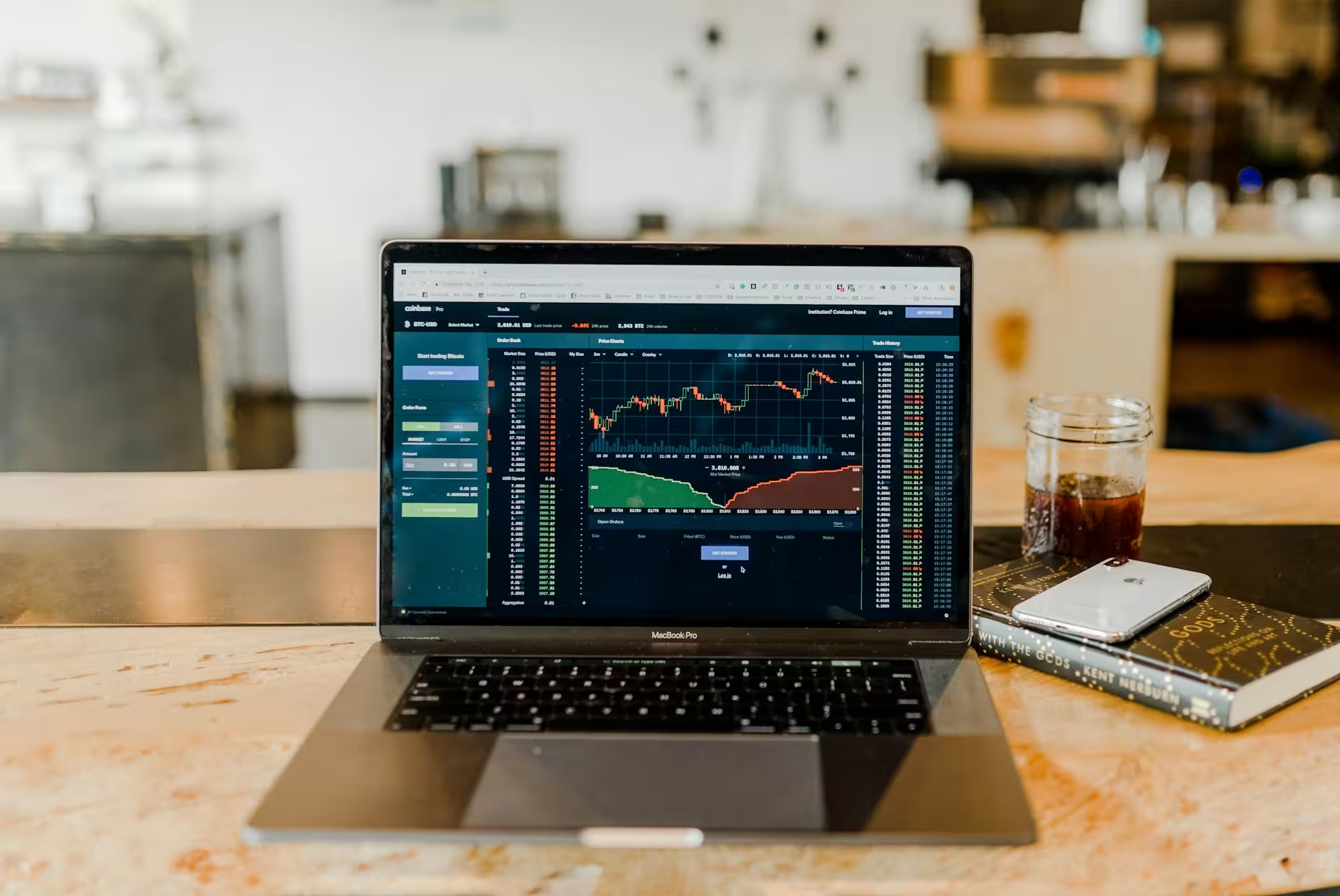As a historical safe haven, gold continues to attract investors. In this context, Gold ETFs are emerging as a solution to optimize the return of an investment portfolio. But what exactly are we talking about? What is a Gold ETF? How does it work? What are the advantages and risks to be aware of? Analysis and advice in this article.
What is a Gold ETF and How Does It Work?
A Gold ETF or gold ETF (Exchange Traded Fund) is a financial product traded on the stock market that replicates the performance of the price of gold without the need to physically hold the metal.
Specifically, by buying a gold ETF, you are buying a share of a fund that tracks the evolution of the price of gold, or, in some cases, the evolution of shares of companies in the gold sector (mining, refining, etc.).
There are two main families of gold ETFs:
- Physical replication ETFs, which actually hold gold bars stored securely (this is the case for funds like iShares Physical Gold or WisdomTree Core Physical Gold).
- Synthetic replication ETFs, which use financial derivatives to reproduce the performance of the metal without ever holding physical gold.
Why Invest in Gold Today?
Gold recently crossed the symbolic threshold of $3,500 per ounce, or nearly €90 per gram. Geopolitical tensions, inflation, and certain monetary uncertainties have undeniably contributed to its value increase.
The fact is that for many investors, it represents insurance against economic shocks, crises, and monetary depreciation. For this reason, gold holds the status of a safe haven asset. A safe haven asset, as a reminder, is an asset in which investors place their money during periods of uncertainty or crisis. A safe haven is qualified as such because it is considered stable, secure, and resistant to economic shocks, like gold, which retains its value when markets are turbulent.
Good to know: The price of gold is set internationally in dollars per troy ounce (31.1035 grams). Its reference quotation is determined by the London Bullion Market Association (LBMA).
[[cta-nl]]
Gold ETFs vs. Physical Gold: Which to Choose?
When it comes to investing in gold, a question arises: should you buy bars or invest via an ETF? Let's look at the advantages and limitations of each option.
The Advantages of Gold ETFs
Generally, the lack of correlation between the price of gold and stock markets, which are based on the buying and selling of corporate stocks, makes it a robust investment product.
In fact, a Gold ETF is positioned as a strategic diversification tool, especially during periods when stock indices are struggling.
In short, integrating gold ETFs into your investment portfolio allows you to aim for an interesting return in the medium to long term while limiting the impact of fluctuations in other assets.
Here are the other advantages of Gold ETFs:
- Accessibility: A share of an ETF can be purchased like a stock, starting from a few dozen euros.
- Liquidity: ETFs are traded on the stock exchange, so you can buy or sell them at any time.
- Logistical Simplicity: No safe, no insurance, no storage.
- Reduced Fees: ETFs often come with lower management fees than a physical purchase.
The Limitations of Gold ETFs
- No physical possession: Unlike a bar, you do not hold a tangible asset.
- Exposure to currency risk, especially if the ETF is denominated in dollars and your portfolio is in euros.
Investing in gold and respecting the environment: a dilemma?
Investing in gold raises an environmental question related to its extraction. Gold mining is one of the most polluting mining industries: colossal water and energy consumption, destruction of ecosystems, use of mercury or cyanide, not to mention CO₂ emissions related to transport and refining. While gold plays a role as a safe haven for investors, it represents a risk for the climate and biodiversity. For an investor sensitive to environmental impact, gold can therefore appear as a contradictory choice.
[[cta-impact]]
The Advantages of Physical Gold
Physical gold also has several advantages:
- Direct ownership of a tangible asset.
- No risk of a financial intermediary's failure.
- Protection in case of a major systemic crisis.
However, in terms of limitations, physical gold comes with storage costs, insurance, and lower liquidity.
In summary: for an investor considering integrating gold into their investment portfolio, Gold ETFs represent a modern, flexible, and effective solution.
What Are the Best Gold ETFs on the Market in 2025?
Here is a selection of the most prominent gold ETFs. They are reputed to be among the most solid on the market. These ETFs therefore allow you to invest either directly in the physical metal or in listed gold companies, such as Barrick Gold or Newmont Mining, for example.
These Gold ETFs are often recommended for their good performance and serious management:
| ETF Name |
ISIN |
Annual Fees |
Type |
| iShares Physical Gold ETC |
IE00B4ND36023 |
0.12% |
Physical Replication |
| Amundi Physical Gold ETC |
FR0013416716 |
0.15% |
Physical Replication |
| WisdomTree Core Physical Gold |
JE00BN2CJ301 |
0.12% |
Physical Replication |
| iShares Gold Producers |
IE00B6R52036 |
0.55% |
Shares in Mining Companies |
| Amundi NYSE Arca Gold BUGS |
LU2611731824 |
0.12% |
Shares in Mining Companies |
Zoom on the difference between ETF and ETC
An ETF (Exchange Traded Fund) is a listed index fund that replicates the performance of an index or a basket of diversified assets. An ETC (Exchange Traded Commodity), on the other hand, is a listed product specifically backed by a raw material, such as gold in this case. ETCs are debt securities issued by a financial institution, often guaranteed by the physical holding of the metal. In summary: ETF = fund, ETC = debt product backed by a raw material.
How to Choose the Right Gold ETF?
Here are the main criteria to consider when integrating gold ETFs into your investment portfolio:
The Product Type
- Physical Gold: It is more secure than Gold ETFs because it is directly backed by stored gold.
- Gold ETF: More flexible, more accessible, it comes with reduced fees, but it is still a potentially riskier asset.
- Mining Company Stocks: They are inherently volatile but can benefit from a possible leverage effect if the price of gold soars.
Management Fees
Some mining company stocks have fees of 0.55% per year (like iShares Gold Producers), which is an extra cost compared to gold ETFs whose fees are around 0.12%. As a result, these management fees can decrease the overall performance of your portfolio. This aspect should therefore be taken into consideration.
Taxation
Warning: no gold ETF is eligible for a PEA (Plan d'Épargne en Actions) to date. All must be held in a CTO (Compte-Titres Ordinaire - Ordinary Securities Account). Capital gains are therefore subject to income tax or the flat tax.
Why are no ETFs eligible for a PEA? Because this plan is reserved for European stocks and funds invested in these stocks.
However, an investor can turn to ETFs that invest in listed gold mining companies, such as Barrick Gold or Newmont Mining. These ETFs, invested in stocks and not physical gold, respect the PEA criteria.
[[cta-platform]]
Who Is Integrating a Gold ETF into Their Portfolio For?
Investing in a gold ETF is suitable for:
- Prudent investors looking for a safe haven.
- Those who want to diversify their portfolio.
- Investors who want to benefit from an asset with long-term exposure.
Also, you should know that it is recommended to limit your portfolio's exposure to gold to between 5% and 10% of the total amount invested, depending on your risk tolerance.
Therefore, an interesting strategy is to combine a physical gold ETF with a mining stock ETF, to play on both the stability of the metal and the growth potential of companies in the sector.
The Risks to Monitor
Like any financial investment, gold ETFs are not without risks. Here are the ones you should know:
- Volatility of the gold price: Even as a safe haven, the yellow metal can experience sharp drops (especially if interest rates rise or the dollar strengthens).
- Currency risk: This is the case if you invest in dollars but your needs are in euros.
- Sector concentration: For ETFs invested only in gold company stocks, you are exposed to aiming for a high return on a single sector, which is always a risk and even a mistake in terms of investment.
What Are the Performance of Gold ETFs?
Here is an overview of the performance over 5 years (until January 2025):
| ETF |
5-Year Performance |
| Amundi Physical Gold ETC |
+84.35% |
| iShares Physical Gold ETC |
+83.90% |
| WisdomTree Core Physical Gold |
+9% |
| iShares Gold Producers |
+7% |
These results illustrate the resilience of the sector and even its very good performance in the medium term, but they also confirm that ETFs based on physical gold are less volatile and prove to be more stable than those invested in mining companies.
Sustainable ETFs, Ecological Alternatives to Gold ETFs
For investors who want to reconcile performance and sustainability, there are alternatives to gold ETFs. These include ESG ETFs (Environmental, Social, and Governance), which select companies that meet sustainability criteria. They allow you to invest in renewable energy, energy efficiency, or clean mobility.
Far from being simple niche products, Gold ETFs now occupy a growing place in the strategy of investors. At the intersection of security and potential performance, they allow you to intelligently diversify your investment portfolio.


.avif)






